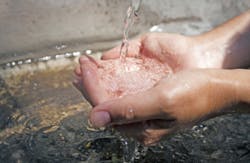New standard addresses water supplies during crises
GENEVA — Aug. 26, 2015 — The International Organization for Standardization (ISO) published a standard that outlines how utilities can be prepared for crisis situations to ensure a safe water supply, according to a press release.
The standard, ISO 24518, helps utilities act during and after emergencies, including how to learn from the situation, noted the release.
During an emergency, potable water is often scarce, presenting a huge problem for people, stated the release. Safely handling wastewater and stormwater is also important to people’s health and flood prevention and the standard addresses these issues.
The standard offers guidance to utilities with the Plan-Do-Check-Act approach:
- Cope with crisis situations to be able to ensure water supply and the removal and treatment of wastewater
- Cooperate with all the authorities concerned
- Consider the natural environment as well as the impact on the health and well-being of the population
- Effectively communicate with the public to mitigate or prevent panic
"Well-developed utilities usually have most of the equipment and facilities needed, and have established emergency processes for crisis situations in their daily operations (such as repairs to broken pipes). If this is the case, it is worthwhile concentrating on organizational issues by establishing a crisis management team. Poorly equipped utilities will need to do much more though, and might need to invest perhaps [10 or 20 percent] of their total budget," explained Jacobo Sack, convenor of the working group that developed ISO 24518, in the release.
ISO 24518 is the first standard to address crisis management in water utilities, reported the release. Water authorities and departments at various levels can use the standard, as well as water corporations, crisis management organizations, water engineers and consultants.
Click here to read the entire release.
